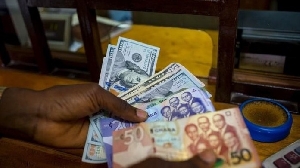In the country’s quest to diversify and improve its commodity export bill, cashew has come to be identified as the produce with the strongest potential of ploughing in as much foreign revenue as cocoa has done for many years.
The aspiration among key players in the cashew sub-sector of making Ghana the hub of Cashew production in West Africa is an indication that cashew cultivation has eventually evolved into a strategic economic sub-sector now meriting far more attention and care than it has received in the past.
Suffice it to note that the cultivation of Cashew (anacadium occidental) in Ghana has come a long way from when it emerged in the 1960s on a rather casual and sporadic scale on domestic backyards in the Central and Greater Accra regions. After migration to the Brong-Ahafo, Northern and the Upper regions, the crop received much more enterprising and successful, albeit small-scale, initiatives in cultivation.
Today, the total land area under cashew production is estimated at well over 150,000 hectares, when in 2000, only 18,000 hectares of land was cultivated. Similarly, the country’s total production of cashew has soared from a meagre 4,000 metric tonnes, as recorded some two decades ago, to 70,000 metric tonnes harvested last year.
Indeed, credit ought to be given to the various levels of intervention by certain government agencies and a number of stakeholder institutions and private companies, for the transformation of cashew farming from what it used to be, into an economically viable sub-sector today.
Unarguably, among the most significant incentives for such an impressive growth of the cashew sub-sector has been, and still is the rising demand for raw cashew nuts (RCN) in overseas markets across Europe and America. It is therefore refreshing to observe the steady increase in the country’s export-bound production. Ghana’s cashew exports soared consistently over the years from 31,335 metric tonnes in 2003, to 77,391 metric tonnes in 2010. Last year, Ghana exported a total volume of 163,000 metric tonnes of raw cashew nuts, generating a handsome foreign revenue receipt of USD244 million for the government!
From the foregoing, there is no doubt that as a crop, cashew is poised to eventually emerge as a fron-trunner in foreign revenue generation for the country; the logical step to take in order to bring this to fruition and make the country the functional hub of cashew production in the sub-region therefore is to create a more congenial operating environment for the sub-sector to thrive to its fullest capacity.
Sadly, in spite all the known interventions, the Ghanaian farmer who matters most in the cashew value chain is still saddled with debilitating problems. Cashew farmers are continually plagued with the difficulty of accessing competitive credit facilities for their businesses and the problem of marketing and dwindling bargaining power of farmers are still hindering growth and discouraging many from cashew cultivation. To date, farmers still lack access to good quality saplings, lack training in proper harvesting practices and processes and do not have proper and adequate warehousing facilities.
This has led to a yawning shortfall between the current level of production and the combined requirement for the installed local processing capacity and the quantum of exportable cashew. Whereas dealers and the major players in the cashew business grapple with the problem of inadequacy of supplies, the reduction or perhaps complete cessation of considerable inflows of nuts from neighbouring countries to beef up local volumes makes the situation even worst.
Farmers and entire cashew growing communities, whose primary motivation for venturing into cashew farming is to earn fair incomes and improve their living standards, regrettably find themselves at the receiving end of the fallout of unpredictable decision-making regarding, as it ultimately appears, whether to promote the local consumption of cashew nuts or to promote the export of the crop for foreign revenue. One is tempted to think that it is this apparent posture which invariably manifests in the occasional ‘banning’ and ‘unbanning’ of the export of the crop!
Whatever the case may be, we must take due note of the fact that the all-round development of the sub-sector is crucial and that the most vital ingredient for the growth of the cashew subsector is, and will always be, the capability and well-being of the farmer and cashew growing communities.
One thing is clear in all this: that in order to develop our cashew sub-sector into a consistent foreign income earner and achieve the dream of becoming a true sub-regional hub for the production of this highly demanded crop, Ghana must adopt strategies which put the interest of cashew farmers and their communities at the centre of every conceivable initiative.
Opinions of Tuesday, 22 August 2017
Columnist: Ekow Quarcoo















